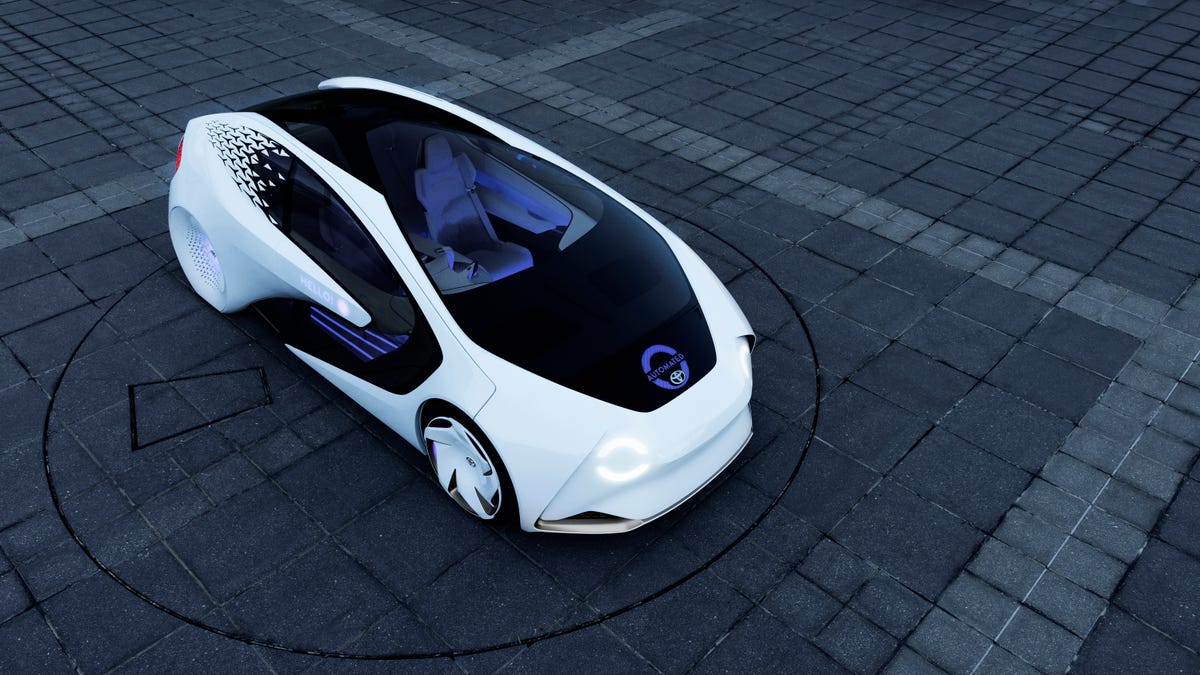Toyota Concept-i is like Siri on wheels, but better
Almost devoid of traditional displays, the Concept-i envisions a future where we form relationships with our AI-powered self-driving cars.

Concept-i, Toyota's conceptual debut at CES 2017, envisions a future where we form relationships with our self-driving cars -- a future where our interactions aren't limited to a touchscreen in the dashboard, but through communicating with an integrated artificial intelligence that predicts and meets the passengers' needs.
Concept-i is a compact autonomous car with a swoopy and organic design. However, the most interesting -- and difficult to explain -- bit is the interior. The cabin is pretty much devoid of traditional black touchscreen displays.
This is part of what Toyota's California-based CALTY Design Research crew and the Toyota Innovation Hub call the philosophy of "kinetic warmth -- a belief that mobility technology should be warm, welcoming, and above all, fun." Basically, Toyota thinks that we should have a more human and immersive relationship with our vehicles.
So, instead of buttons and screens passengers interact with the vehicle's artificial intelligence (AI) agent, nicknamed "Yui," which will anticipate the onboard humans' needs, measure their emotions and responds automatically. These responses could be verbal (like suggesting a destination) or through mood enhancing environmental cues (such as altering the lighting throughout the cabin). Passengers can also just talk to Yui like they would Siri on their smartphone to make natural language requests.
Designed for both autonomous and piloted driving, Concept-i features a steering wheel and driver aid features like projecting video views onto the rear pillars to eliminate blind spots and a next-generation head-up display that helps keep the driver's eyes and attention on the road.
This touchy-feely relationship with technology continues outside of the cabin, which allows Yui to greet the approaching driver through exterior displays and an opening of the vertically hinged doors. The exterior also features dynamic graphics that inform pedestrians whether the Concept-i is its in autonomous or human-piloted modes and can share visual information about the road ahead through graphics on the vehicle's rear.
When you consider how much time modern techies spend a lot of time talking to our gadgets -- among Siri and Google, Alexa and Cortana -- perhaps Toyota's vision isn't so far off the mark.

